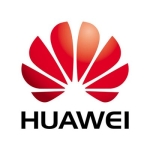We have a HP 3PAR C7200 storage array with a small portion of it being Flash. Even though it's a small percentage of our total SANs usable capacity, the applications that we run off it have greatly exceeded our expectations. I can't even fathom the performance increase of having an all-Flash array. Using HP's Adaptive Optimization including the Flash storage, it's great to see if one of our applications is under heavy stress to see it move to the Flash to increase performance for the end users. This, compared to our last standard SAN setup, has easily increased the performance and accessibility of our on-site applications ten-fold.
For the end users: This allows us to deliver content to them faster, access their files faster, load apps quicker, and increase stability of them, all to boot! This was a very imperative piece as we have an extraordinary first year of full 1-to-1.
For us (IT): Having the access to this technology has been amazing! This allows us to do so much with our virtual infrastructure. We can monitor things more accurately, move things around with no performance decrease, and, let's be honest, seeing all those IOPs is just fun!
Overall, having the Flash availability with a HP 3PAR Storage setup has been night and day from our last solution, and I can't wait to really start pushing it to it's true limits.
The management console could use some work. All the functionality is there, of course, but it can be hard to find some features or do certain tasks. I feel like to get to some features, I need to dig through many sub-menus then tabs in those sub-menus to change a simple thing. Their StoreServ Console (optional) Makes this better, but it still isn't perfect. I would love to see some better help documentation on the StoreServ console other than just writing out the tooltips in a document. I would also like an easier way to re-assign the shelf numbers as they cannot be set statically at least in the build I'm using.
I would like to see more integration with VMware as the plugin currently is good, but I would love to see a ton more functionality with it such as adaptive monitoring. I haven't used HP's OneView software, but I would really like to see something like that built-in with the base product other than purchasing this at an additional cost just to manage all my HP products in one place. I'd also love it if HP started branching out and integrating some of the more well-known solutions into their products by default, such as Veeam and SRM. I know that from a sales point, that might not be the most revenue-generating mood, but it would definitely make a lot of SysAdmins happy.
We have a large population of students and we have gone full one-to-one this year. We are striving to deliver content to them as seamlessly as possible to encourage a learning environment where they can get to everything they need without having to think about it. This can be quite a challenge just by the sheer diverse volume of data that the students use. Everyday is a new challenge that we are more than happy to tackle head-on.














Hi Steven, We are mostly using Local Internal Access and if External, VPN access provided by our firewalls is used for specified users. All of our sites are linked so external access is not always necessary but, I think using Citrix if setup securely would be a good option.